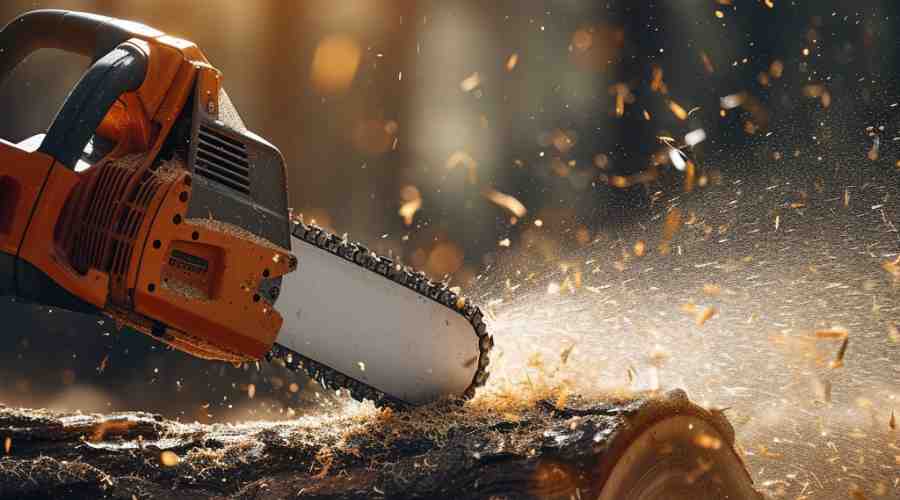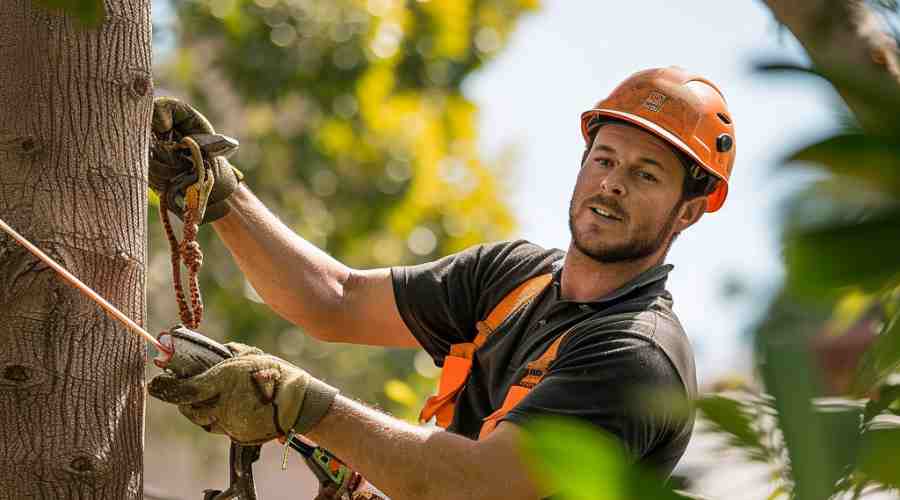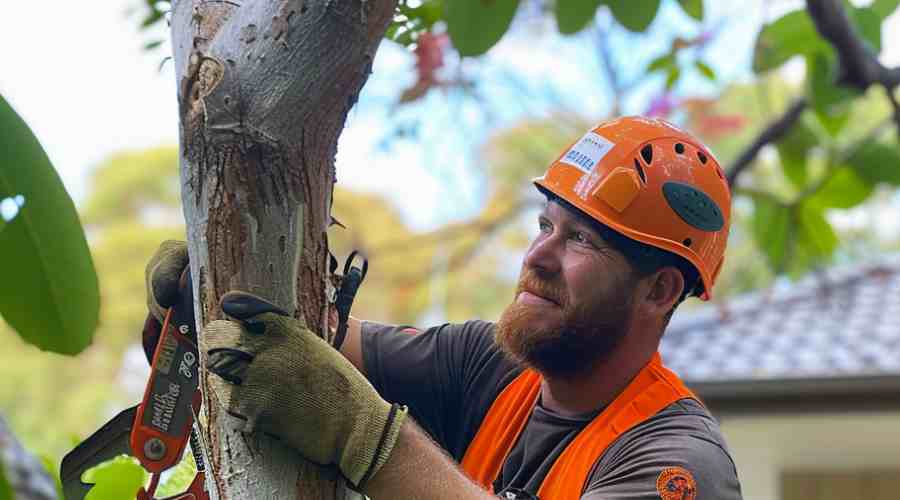DIY Tree Removal Tips
Dangers of DIY Tree Cutting and How to Stay Safe
Removing a tree yourself can seem like an easy way to save money. However, tree removal is very dangerous work that requires proper training and safety equipment. Attempting to cut down large trees without experience puts you and your property at risk.
While some small tree trimming and pruning projects may be manageable for a homeowner. Full tree removal is best left to the professionals. Read on to learn when you should call the experts, how to safely prep your site, equipment needed, proper tree felling technique, and common errors that lead to accidents and fines. With the right approach, even major removals can go smoothly.
Why Consider DIY Tree Cutting
Before deciding on DIY, consider why you want to remove the tree yourself:
Save Money
Professional tree services often charge several hundred to several thousand dollars. The cost depends on the tree size, location, access, and if grinding the stump is included. Doing it yourself can potentially save a lot of money.
Feeling Handy
Some homeowners are quite hands-on and feel up to the complex task of safely cutting down and disposing of a mature tree. Pride and self-sufficiency may drive them to DIY.
Limited Budget
For those with very limited budgets, professional services may not be an option at all. Attempting tree removal on your own may be the only way, despite the risks.
While these reasons are understandable, they do not outweigh safety. Tree work accidents can lead to exorbitant medical bills, damage, and lawsuits. Think hard before going the DIY route.
When To Call The Professionals
DIY tree removal is only advisable for smaller, isolated trees up to 10 cm in trunk diameter. Anything larger should be done by a certified arborist. Specifically, you need to hire experts for:
- Tall trees over 30 feet or 9 metres
- If they are leaning toward your home
- Multi-stemmed or extremely dense trees
- If they are located close to power lines or electrical wires
- Hollow or diseased trees
- If they are adjacent to busy roads or walkways
Fully removing large, mature trees requires commercial equipment like bucket trucks, chippers, and stump grinders. The job also demands extensive technical knowledge, training, and manpower. Don’t take unnecessary risks with high-stakes tree removals on your yard.
Assess and Prepare The Site
Before cutting, assess what felling the tree will affect. Check for:
- Nearby buildings, vehicles, or other valuables
- Pedestrian or driver traffic areas
- Above and below ground utilities
- Fences, gardens, pathways, etc.
- Wildlife habitats with restrictions
Also thoroughly inspect the tree itself for size, lean, rot, and branch structure.
Then prepare the site by:
- Selecting a drop zone so the tree falls safely
- Pruning dead branches
- Clearing away brush and obstacles
- Setting up traffic control if needed
- Gearing up properly (see next section)
Correct site analysis and preparation prevents accidents and potential damages.
Essential Tools For DIY
Don’t attempt tree removal project without these essential protective equipment:
Protective Gear
- Hard hat (Class E)
- Eye protection (Safety goggles / Safety glasses)
- Hearing protection
- Work gloves
- Steel-toe boots
- Long sleeves and pants
- Dust mask
Proper Tools
- Chainsaw suitable for the job
- Wedges and sledge to control felling
- Ladder, ropes or come-along for climbing
- First aid kit and fire extinguisher
Other Supplies
- Fuel and oil for chainsaw
- Barriers like cones or tape
- Signs to mark safety hazards
- Drop cloths to protect plants
These prevents personal injuries and keep you safe if the tree itself falls the wrong way.
10 Steps For DIY Tree Removal
Follow these key steps when attempting DIY:
1. Evaluate Hazards
Assess dangers to yourself and property before starting. Have an escape route planned.
2. Clear Space
Remove brush, trim branches, etc so you can work freely.
3. Choose Drop Zone
Determine what direction is safest for felling based on location of structures and wind conditions.
4. Make Backcut First
Cut a notch about 1/3 into 1.5 m off the ground level oriented toward the drop zone.
5. Create Hinge
Saw horizontal cut that meets bottom of notch to control fall. Should be 5 cm above bottom to create a wide hinge of timber.
6. Drive Wedges
Use wood wedges to further encourage the tree to move toward your intended drop zone as it falls.
7. Retreat Uphill
Get away once it starts falling in case it “barbers chairs” or bounces back off other nearby trees.
8. Limb Tree
Once fallen, remove all branches while being aware of spring poles that could snap against you.
9. Buck Trunk
Using an up/down sawing motion, cut it into movable logs working from the crown down.
10. Clean Up
Dispose debris or cut or stack logs for firewood. Fill hole or grind out tree stump if desired.
These DIY steps require two people for safety. Always assess risks before chainsaw use and stop work if beyond your skill level.
Common Mistakes To Avoid
Even with preparation, things can go wrong fellling a mature tree:
Cutting too small of a backcut notch
It can fall backward instead of your intended drop zone. The notch must be 1/3 of tree trunk diameter.
Forgetting wedges
These prevent the tree from settling backward as it falls. Use wood or plastic type to direct the tree.
Incorrect hinge size
The hinge after the back cut steer the tree’s fall. Make it around 5 cm thick. Too thin and it may twist or slash sideways.
Saw binding
Forcing a chain saw through a tree can get it stuck or twist it sideways violently. Keep saw moving smoothly, watch for snags.
Standing downhill or too close
Stay alert uphill and at least twice the tree height away. Expect bouncing or sliding.
Carelessness leads to accidents yearly. Always hire a professional removal service for big, risky trees near homes.
Pro Tip: Even a seemingly healthy tree can fall in the wrong direction so it’s better to use proper techniques when cutting. As a safety tip, always have your escape path planned, and never cut the tallest branch first. Saving that main stem for last gives you better control to maneuver the tree’s fall in the intended direction. Rushing the job or overlooking hazards puts you at serious risk.
Laws Around Trees
Most areas allow homeowners to remove dead trees on their private property without permits, with some exceptions:
- Preservation Codes – Some old, large, or specimen trees may be protected by city or county ordinance. Permits and fines apply.
- Power or Phone Lines – Utility companies require advanced notice and may need to disconnect lines before removal around them.
- Traffic Areas – You may need temporary street closure permits if taking an entire tree down next to a public road.
Be sure to verify local regulations before attempting removal. Professional arborists handle permit in advance as part of their service.
Conclusion
Felling large trees is extremely dangerous. DIY tree removal risks serious injury, property damage, and liability. For most homeowners, hiring professional tree removal services is highly recommended when cutting down mature, complicated trees. Quality tree companies have the proper training, safety gear, and experience for removal with care.
Expenses pale in comparison to potential harm. Get bids from licensed local companies to find affordable experts that will fell trees properly. If they appear too hazardous for DIY work, call the pros before you pick up a chainsaw or a wood chipper!



